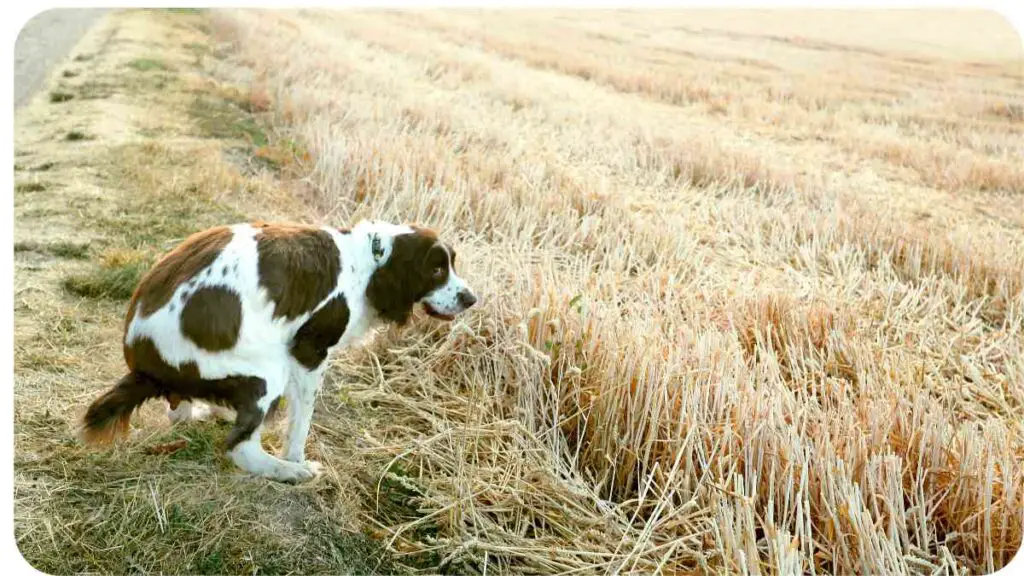Discover everything you need to know about raising Jack-A-Poo puppies in this comprehensive guide. Unravel the mysteries of their birth, learn how to optimize their litter size, and explore essential tips for care and training.
From preparing for birth to housetraining techniques, we’ve got you covered. Let’s dive into the exciting world of Jack-A-Poo puppies and ensure a healthy and joyful journey for both you and your new furry family members.
| Takeaways |
|---|
| – The litter size of Jack-A-Poos can vary. |
| – Factors such as genetics, health, and breed characteristics |
| can influence the number of puppies in a Jack-A-Poo litter. |
| – On average, Jack-A-Poos can have a litter size of 4 to 6 |
| puppies. |
| – Proper care, nutrition, and prenatal veterinary check-ups |
| are essential for the health and well-being of the mother |
| and her puppies. |
| – Consulting with a veterinarian can provide more specific |
| information and guidance regarding the litter size of |
| individual Jack-A-Poos. |
Understanding Jack-A-Poo Litter Size

Jack-A-Poos, the delightful blend of Jack Russell Terrier and Poodle, typically have litters ranging from 1 to 5 puppies. These small bundles of joy are born with closed eyes, a feature that persists until they reach around two weeks old, when their eyes naturally open to the world.
In the early stages of life, proper nutrition is paramount. Jack-A-Poo puppies should be fed at least twice a day, ensuring they receive the necessary nutrients for healthy growth. This feeding regimen is recommended until they reach four months of age, after which a transition to once-a-day feeding is suitable.
Understanding the nuances of Jack-A-Poo litter size and the nutritional needs of these adorable puppies is crucial for their well-being and your role as a responsible owner. Stay tuned for more insights into the world of Jack-A-Poo puppies!
Curious about the litter size of a Jack Chi? Our comprehensive guide provides insights into the factors influencing litter size and the characteristics of this intriguing hybrid breed. Explore more about the Jack Chi‘s litter size and traits in our article on how many puppies can Jack Chi have!
Maximizing Jack-A-Poo Litter Size: Nutrition Matters
Boosting the potential for a larger litter of Jack-A-Poo puppies involves providing optimal nutrition to the expecting mother. Elevate your chances of welcoming more than one puppy by adhering to these key practices:
- High-Quality Food:
- Offer your female Jack-A-Poo a diet rich in high-quality, balanced food. Quality nutrition is the foundation for a healthy pregnancy and robust litter.
- Caloric Intake:
- Ensure she receives sufficient calories throughout pregnancy and lactation. Adequate caloric intake supports her energy needs and facilitates the production of nourishing milk for her puppies.
Preparing for the Arrival of Your Jack-A-Poo Puppies
Welcoming a litter of Jack-A-Poo puppies into the world is an exciting journey that requires careful preparation. Here’s how you can ensure a smooth and comfortable birthing process for your beloved pet:
- Vet Checkup:
- Schedule a thorough vet checkup for your Jack-A-Poo before she gives birth. Prioritizing her health is paramount, and professional guidance can help address any potential concerns.
- Learn the Signs:
- Familiarize yourself with the signs of impending labor and understand when to seek veterinary assistance. Monitoring her temperature can offer valuable insights into the birthing timeline.
- Create a Comfortable Environment:
- Prepare a cozy and quiet birthing area for your Jack-A-Poo. Consider providing soft bedding and ensuring adequate privacy to minimize stress during delivery.
- Hydration and Nutrition:
- Keep your Jack-A-Poo hydrated by providing plenty of fresh water leading up to the birth. Additionally, maintain her regular feeding schedule and offer nutritious treats to keep her energy levels up.
- Emotional Support:
- Shower your Jack-A-Poo with love and reassurance during this transformative time. Your presence and affection will help alleviate anxiety and create a positive birthing atmosphere.
Wondering about the potential litter size of a Jack Russell Terrier? Discover the fascinating details behind the reproductive patterns and average litter size of this energetic and popular breed. Dive into our informative article on how many puppies can Jack Russell Terrier have to satisfy your curiosity!
Comprehensive Care Guide for Your Jack-A-Poo Puppies
Ensuring the well-being of your Jack-A-Poo puppies involves dedicated care and attention. While not human children, they are an essential part of your family and deserve the best. Here’s a comprehensive guide to nurturing healthy, happy, and safe Jack-A-Poo puppies:
- Nutritious Diet:
- Provide a well-balanced and age-appropriate diet for optimal growth and development. Consult with your veterinarian to determine the best feeding schedule and dietary requirements.
- Regular Veterinary Checkups:
- Schedule routine vet visits to monitor your puppies’ health, vaccinations, and address any emerging concerns. Early detection of issues can significantly impact their overall well-being.
- Socialization and Training:
- Introduce your Jack-A-Poo puppies to various environments, people, and other pets from an early age. Socialization and basic training contribute to well-adjusted and obedient adult dogs.
- Safe Environment:
- Puppy-proof your home to create a safe environment. Remove potential hazards, secure electrical cords, and provide a designated area for play and rest.
- Regular Exercise:
- Engage in age-appropriate play and exercise activities to promote physical and mental health. Regular walks, interactive play, and toys contribute to a happy and energetic lifestyle.
- Grooming Routine:
- Establish a grooming routine to keep their coat healthy. Brush regularly, trim nails, and maintain proper hygiene to prevent matting and discomfort.
- Affection and Bonding:
- Shower your Jack-A-Poo puppies with love and attention. Building a strong bond from the start fosters trust and creates a positive relationship.
- Health Monitoring:
- Keep an eye on their behavior, appetite, and energy levels. Promptly address any signs of discomfort, illness, or abnormal behavior.
- Secure Identification:
- Ensure your puppies have proper identification, such as a collar with an ID tag and a microchip. This aids in their safe return if ever lost.
- Educate Yourself:
- Stay informed about the specific needs and characteristics of the Jack-A-Poo breed. Knowledge empowers you to provide tailored care and address their unique requirements
Choosing the Perfect Names for Your Jack-A-Poo’s Newborn Puppies

Naming your Jack-A-Poo’s newborn puppies is an exciting task that adds a personal touch to their individual identities. Consider these tips for selecting names that are easy, meaningful, and set the foundation for a lifetime of companionship:
- Simplicity is Key:
- Opt for names that are easy to say and spell. Simple names facilitate communication and are easier for both you and your puppy to remember.
- Avoid Lengthy Complications:
- Steer clear of names that are too long or complicated. Short and straightforward names are more effective and less likely to cause confusion as the puppies grow.
- Celebrate Uniqueness:
- While avoiding names of celebrities or friends/family members, embrace the uniqueness of each puppy. Choose names that reflect their individual personalities and characteristics.
- Say No to Food Names:
- Resist the temptation to name your puppies after food items. Associating names with edible items may unintentionally influence their habits and could lead to confusion.
- Consider the Future:
- Visualize your puppy’s name standing the test of time. A name that suits a playful puppy should also be fitting for a mature dog.
- Theme or Inspiration:
- Explore themes or draw inspiration from your Jack-A-Poo’s characteristics, coat colors, or patterns. This adds a creative and personal touch to their names.
- Involve the Family:
- If you have a family, involve everyone in the naming process. This fosters a sense of shared responsibility and ensures that each family member feels a connection to the chosen names.
- Observe Their Personalities:
- Spend time with the puppies, observing their behaviors and unique traits. Tailor their names to match their individual personalities, creating a bond between you and your furry companions.
Winter Care Guide for Jack-A-Poo Puppies
Caring for Jack-A-Poo puppies during winter requires special attention to keep them warm and healthy. Follow these essential tips to create a cozy environment for your furry companions:
- Dry and Draft-Free Shelter:
- Ensure their living space is dry and free from drafts. Protect them from cold winds by placing their shelter in a well-insulated area, away from direct drafts.
- Heating Pad Comfort:
- Enhance warmth by placing a pet-safe heating pad under their sleeping area. This provides a gentle and controlled heat source, keeping the puppies cozy during chilly nights.
- Snuggle-Worthy Blankets:
- Supply an ample amount of soft blankets for the puppies to snuggle into. Blankets provide additional insulation and comfort, helping them stay warm and secure.
- Regular Checkups:
- Monitor the puppies regularly as they grow. Check their body temperature to ensure they are neither too cold nor too warm. Adjust their environment based on their comfort levels.
- Avoid Overheating:
- While warmth is crucial, be cautious not to overheat the puppies. Ensure there is a balance, and they have the flexibility to move away from the heating source if needed.
- Insulated Sleeping Area:
- Create an insulated sleeping area by using cozy beds and additional layers of blankets. This helps retain their body heat and provides a comfortable space for rest.
- Adjust Indoor Temperature:
- Maintain a comfortable indoor temperature in the surrounding area. Avoid sudden temperature drops and ensure a consistent, warm atmosphere for the puppies.
- Hydration:
- Keep the puppies well-hydrated. Provide access to fresh, unfrozen water to prevent dehydration, which is essential for their overall health.
- Limit Outdoor Exposure:
- During extreme cold weather conditions, limit outdoor exposure. Puppies are more susceptible to cold, and shorter outdoor sessions help prevent discomfort.
- Veterinary Guidance:
- Consult with your veterinarian for specific advice on winter care. They can offer personalized recommendations based on the unique needs of your Jack-A-Poo puppies.
| Tips for Keeping Jack-A-Poo Puppies Warm and Healthy in Winter |
|---|
| Provide a cozy and insulated sleeping area for puppies. |
| Use warm and comfortable bedding to prevent cold floors. |
| Dress puppies in dog sweaters or jackets when going outside. |
| Limit outdoor exposure during extreme cold weather conditions. |
| Keep puppies hydrated and ensure access to fresh water. |
| Avoid drafts and provide a draft-free environment indoors. |
| Use pet-safe heating pads or blankets to provide extra warmth. |
| Monitor puppies for signs of discomfort or cold-related issues. |
Effective Potty Training Tips for Your Jack-A-Poo Puppy
Potty training your Jack-A-Poo puppy requires consistency, positive reinforcement, and patience. Follow these practical tips to establish successful potty training habits:
- Frequent Outdoor Trips:
- Take your puppy outside regularly, ideally every hour, to familiarize them with the designated bathroom area. Consistency helps them understand the routine.
- Positive Reinforcement:
- Praise and reward your puppy when they eliminate outside. Positive reinforcement, such as treats or verbal praise, reinforces the desired behavior.
- Immediate Outdoor Response:
- If you catch your puppy in the act of eliminating indoors, calmly say “no” and immediately take them outside. This helps them associate outdoor spaces with bathroom activities.
- Avoid Punishment:
- Refrain from punishing your puppy for accidents indoors. Instead, focus on redirecting them to the appropriate outdoor area. Punishment may create fear and hinder the training process.
- Enzyme Cleaner Use:
- Clean indoor accidents with an enzyme cleaner. This helps eliminate residual scents that might attract your puppy to the same spot. Enzyme cleaners are pet-safe and prevent unpleasant odors.
- Bell Training:
- Introduce a bell on the door and encourage your puppy to touch it with their nose. Ringing the bell signals the need to go outside. Consistency is key to reinforcing this association.
- Designate Bathroom Area:
- Clearly define a specific bathroom area outside. This helps your puppy understand where they should eliminate and reinforces consistency in their routine.
- Supervision:
- Keep a close eye on your puppy, especially during crucial times like after meals or waking up. Immediate outdoor trips during these times reduce the likelihood of accidents.
- Routine Schedule:
- Establish a consistent feeding and outdoor schedule. Predictability helps regulate your puppy’s bathroom habits, making training more effective.
- Patience and Persistence:
- Potty training takes time, and setbacks may occur. Be patient, stay positive, and remain consistent in your approach. Consistency is key to success.
If you’re intrigued by the delightful blend of a Jackshund, you might be curious about their litter size. Learn about the factors that influence the number of puppies a Jackshund can have and the characteristics they inherit from their parent breeds. Uncover more about the Jackshund breed and its litter size in our detailed guide on how many puppies can Jackshund have!
Understanding Shedding in Jack-A-Poos

Jack-A-Poos, akin to many dogs, possess a double coat consisting of an outer layer and an undercoat, aiding in warmth retention during winter months. To manage shedding effectively, adhere to these grooming practices:
- Daily Brushing:
- Brush out the undercoat daily to prevent tangling and matting. Regular brushing minimizes the accumulation of fur around their feet and prevents entanglement in their teeth during meals.
- Regular Baths:
- Provide your Jack-A-Poo with regular baths to maintain skin health and cleanliness. Bathing helps remove dirt and mud buildup, ensuring a hygienic coat.
Understanding the Cost of Jack-A-Poo Puppies
The price of a Jack-A-Poo puppy fluctuates based on various factors, including breeder reputation, pedigree, coat color, and demand. Here’s a breakdown of potential cost ranges:
- Pet Quality Puppies:
- Pet quality Jack-A-Poo puppies typically range from $300 to $800. These puppies may not meet the standards for showing but make wonderful companions.
- Show Quality Puppies:
- Show quality Jack-A-Poo puppies, bred to adhere to specific breed standards, often command higher prices. Expect to invest around $2,000 or more for a show quality puppy.
Factors Influencing Cost:
- Breeder Reputation: Established breeders with a solid reputation may charge higher prices due to their expertise and dedication to breeding healthy puppies.
- Pedigree and Lineage: Puppies from champion bloodlines or with prestigious pedigrees may be priced higher due to their superior lineage.
- Coat Color and Markings: Certain coat colors or markings may be considered rare or desirable, influencing the puppy’s price.
- Location and Demand: Prices may vary based on geographical location and the demand for Jack-A-Poo puppies in specific regions.
| Factors to Consider | Average Cost Range ($) |
|---|---|
| Breeder Reputation | 1000 – 2500+ |
| Pedigree and Lineage | 1200 – 3000+ |
| Coat Color and Markings | 1000 – 2500+ |
| Location | 800 – 2000+ |
| Demand and Popularity | 1000 – 3000+ |
| Additional Expenses | Varies |
Quick Housetraining Tips for Your Jack-A-Poo Puppy
- Crate Training:
- Use a crate as a secure space for your puppy. Introduce positive associations to make it a comfortable retreat.
- Freedom and Safety:
- Balance freedom with crate time to prevent accidents and ensure your puppy’s safety.
- Alternatives:
- Consider tethering or paper training as alternatives to crating, especially in limited spaces.
- Indoor Potty Pads:
- For convenience, use indoor potty pads, a practical option for older dogs in apartments or condos.
- Consistent Schedule:
- Set a consistent feeding and bathroom schedule to establish routines and minimize accidents.
- Positive Reinforcement:
- Reward your puppy with treats and praise when they eliminate in the designated area.
- Patience and Persistence:
- Housetraining takes time; stay patient, be consistent, and celebrate successes along the way.
Interested in the reproductive patterns of a Japanese Spitz? Discover valuable insights into the litter size and breeding characteristics of this charming and fluffy breed. Our comprehensive article on how many puppies can Japanese Spitz have provides all the information you need to know about this delightful dog!
Maintaining Your Jack-A-Poo’s Litter Box
- Regular Cleaning:
- Scoop the litter box daily to remove waste and maintain cleanliness. Replace soiled litter as needed to keep the box fresh.
- Appropriate Size:
- Ensure the litter box is spacious enough for your Jack-A-Poo to comfortably turn around and dig. Opt for a size that accommodates their needs.
- Strategic Placement:
- Position the litter box in a quiet and accessible area where your puppy feels comfortable. Avoid high-traffic areas to promote privacy.
- Monitoring Usage:
- Monitor your puppy’s litter box habits. If they’re avoiding it or showing signs of discomfort, assess the location, cleanliness, and litter type.
- Room Confinement:
- Consider confining your puppy to one room during training to encourage litter box usage. Supervision and positive reinforcement are key during this period.
- Positive Reinforcement:
- Reward your puppy with praise or treats when they use the litter box correctly. Positive associations encourage desired behaviors.
- Litter Adjustment:
- Experiment with different litter types to find what your puppy prefers. Some may prefer clumping litter, while others may prefer non-clumping varieties.
Indicators for Changing Your Puppy’s Litter

To ensure a hygienic and comfortable environment for your puppy, pay attention to the following signs indicating when it’s time to change the litter:
- Avoidance of the Litter Box:
- If your puppy starts avoiding the litter box, it may signal dissatisfaction with its condition. Change the litter to encourage proper usage.
- Eating Litter:
- If you observe your puppy consuming the litter, it’s a clear sign that the current type may not be suitable. Change to a safer alternative to prevent ingestion.
| Criteria for Changing Litter | Description |
|---|---|
| Age of Litter | Evaluate the age of the litter to determine if it’s time to change. |
| Absorption Capacity | Assess the litter’s ability to absorb urine and control odors. |
| Clumping or Non-Clumping Litter | Consider whether the litter is clumping or non-clumping. |
| Foul Odor | Determine if the litter has a persistent unpleasant smell. |
| Hygiene and Cleanliness | Maintain a clean and hygienic environment for your puppy. |
| Brand Recommendations | Consider trusted brands known for quality and puppy suitability. |
Deciphering Your Jack-A-Poo’s Emotions
Understanding your Jack-A-Poo’s emotions can strengthen your bond and ensure their well-being. Here’s how to interpret their feelings:
- Body Language:
- Observe your puppy’s body language for cues. Happy puppies often wag their tails, bark joyfully, and exhibit an energetic demeanor.
- Playfulness and Energy:
- Happy Jack-A-Poo puppies display enthusiasm for playtime and activities. They may engage in jumping, running, and interactive play with toys.
- Interactive Behavior:
- A content Jack-A-Poo seeks interaction and companionship. They enjoy spending time with you, responding eagerly to attention and affection.
- Engagement in Play:
- Encourage playtime and provide stimulating toys to keep your puppy entertained and mentally engaged. A happy Jack-A-Poo eagerly participates in games and activities.
Are you curious about the potential litter size of a Jagdterrier? Explore our informative guide to understand the factors that influence the number of puppies a Jagdterrier can have and the characteristics of this versatile hunting breed. Find out more about the Jagdterrier breed and its litter size in our article on how many puppies can Jagdterrier have!
Ensuring the Health of Your Jack-A-Poo Puppy
Keeping a close eye on your Jack-A-Poo puppy’s well-being is crucial for their health. Here’s how to assess their condition:
- Energy Level and Appetite:
- A healthy Jack-A-Poo maintains a good energy level and displays a hearty appetite. Lethargy or a sudden lack of interest in food may indicate illness.
- Coat Condition:
- Check your puppy’s coat regularly. A healthy coat should shine without bald spots. If you notice hair loss or irregularities, consult your vet promptly, as it may signal stress or illness.
- Alertness and Activity:
- Healthy puppies are alert and engage in age-appropriate activities. Monitor their playfulness, responsiveness, and interest in their surroundings.
- Respiratory Health:
- Keep an eye on respiratory health. While occasional sneezing may be normal, persistent coughing or wheezing could indicate respiratory issues. Consult your vet if such symptoms arise.
- Prompt Veterinary Attention:
- If you notice any signs of illness or behavior changes, seek prompt veterinary attention. Early intervention is crucial for effective treatment and maintaining your puppy’s health.
Conclusion
In wrapping up, we trust this guide has addressed your queries about Jack-A-Poo puppies. If you’re considering a new four-legged addition known for minimal shedding and odor, the Jack-A-Poo might be the ideal breed for you!
However, every family’s lifestyle is unique. If the Jack-A-Poo doesn’t align with your preferences, remember there are numerous breeds with similar traits awaiting your consideration. Happy exploring as you find the perfect canine companion to enhance your family life!
Further Reading
Jackapoo Breed Guide by My Family Vets: Explore this comprehensive breed guide to learn more about the Jackapoo, including their characteristics, care needs, and training tips.
Jackapoo: The Complete Guide by The Happy Puppy Site: Dive into this complete guide that covers everything you need to know about Jackapoos, from their origin and temperament to grooming requirements and health considerations.
Jack-A-Poo: Dog Breed Information by WagWalking: Get detailed breed information, personality traits, training advice, and health tips for Jack-A-Poos in this informative article.
And here’s the FAQs section in Markdown language with 5 questions and answers:
FAQs
What is the average size of a Jack-A-Poo?
The size of a Jack-A-Poo can vary depending on the size of its parent breeds. On average, they are small to medium-sized dogs, ranging from 10 to 15 inches in height and weighing between 10 to 25 pounds.
Are Jack-A-Poos hypoallergenic?
Yes, Jack-A-Poos are considered to be hypoallergenic dogs. They have hair instead of fur, which reduces the amount of dander they produce. However, individual reactions can vary, so it’s always recommended to spend time with a Jack-A-Poo before making a decision if you have allergies.
How much exercise does a Jack-A-Poo need?
Jack-A-Poos are energetic dogs that require regular exercise to keep them mentally and physically stimulated. Daily walks, playtime, and interactive activities are recommended to meet their exercise needs. Aim for around 30 minutes to 1 hour of exercise each day.
What is the typical temperament of a Jack-A-Poo?
Jack-A-Poos are known for their friendly and affectionate nature. They often inherit the intelligence and loyalty of their parent breeds, making them eager to please. They can be lively, outgoing, and social dogs that enjoy being part of the family and interacting with people and other pets.
Do Jack-A-Poos require a lot of grooming?
Jack-A-Poos have a low to moderate grooming requirement. Their coats can vary, but they typically have wavy or curly hair that needs regular brushing to prevent matting and tangling. Occasional professional grooming and regular nail trimming and teeth brushing are also recommended for their overall health and well-being.

I’m Dr. Hellen James, a professional veterinarian with a deep interest in the ways that litter size affects the health of animals. I’ve spent years studying this subject and performing research on reproduction in many different kinds of creatures.


